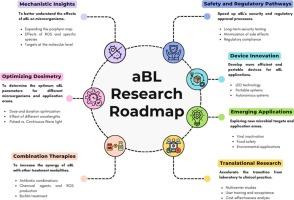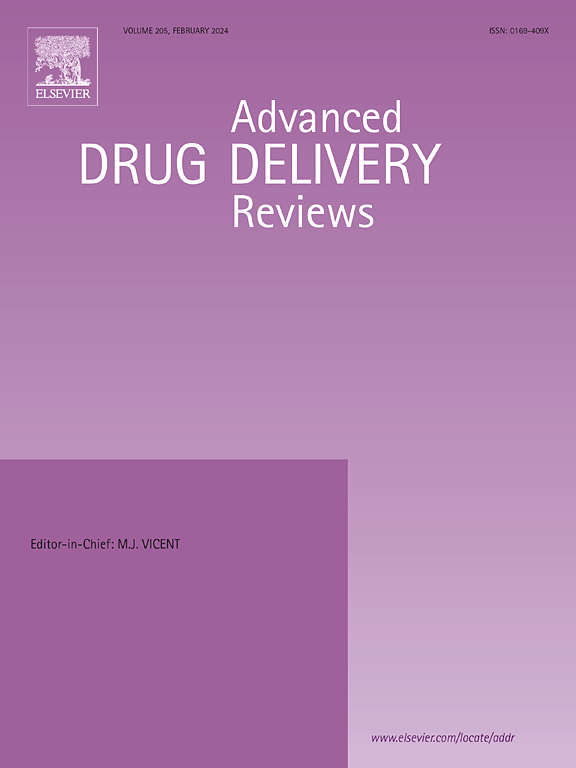Lights out for Superbugs: Is antimicrobial blue light a potential approach for future infection Control?
IF 17.6
1区 医学
Q1 PHARMACOLOGY & PHARMACY
引用次数: 0
Abstract
The rise of antimicrobial resistance (AMR) poses a significant threat to global health, as traditional antimicrobials are increasingly losing efficacy against a broad spectrum of pathogens. Antimicrobial blue light (aBL), an innovative light-based approach that utilizes wavelengths between 405 and 470 nm, has emerged as a prominent alternative. Unlike conventional antimicrobials, aBL inactivates microorganisms without promoting resistance by targeting endogenous chromophores within pathogens to generate reactive oxygen species (ROS). This review first provides an in-depth analysis of aBL’s mechanisms of action, highlighting its unique ROS-driven effects on microbial membranes, DNA, and proteins. Moreover, we discussed recent developments in aBL’s applications across bacterial, viral, and fungal pathogens and evaluated its effectiveness in biofilm eradication and combinational therapies with conventional antimicrobials as well as with multimodal innovations. This review also examines the safety and regulatory considerations associated with aBL. While aBL holds tremendous potential, challenges remain in its clinical translation, including optimizing dosages, ensuring safety in complex biological systems, and advancing device design. Future research must address these gaps to facilitate the clinical translation of aBL and expand its role in combating resistant infections.


超级细菌熄灯:抗菌蓝光是未来感染控制的潜在方法吗?
抗菌素耐药性(AMR)的上升对全球健康构成重大威胁,因为传统抗菌素对广泛的病原体越来越失去功效。抗菌蓝光(aBL)是一种创新的基于光的方法,利用波长在405和470 nm之间,已经成为一种突出的替代方案。与传统抗菌剂不同,aBL通过靶向病原体内的内源性发色团产生活性氧(ROS)来灭活微生物而不促进耐药性。本文首先对aBL的作用机制进行了深入分析,重点介绍了其对微生物膜、DNA和蛋白质的独特ros驱动作用。此外,我们讨论了aBL在细菌、病毒和真菌病原体中的应用的最新进展,并评估了其在生物膜根除和与传统抗菌剂联合治疗以及与多模态创新的有效性。本综述还探讨了与aBL相关的安全性和监管考虑。虽然aBL具有巨大的潜力,但其临床转化仍面临挑战,包括优化剂量,确保复杂生物系统中的安全性以及推进设备设计。未来的研究必须解决这些空白,以促进aBL的临床转化,并扩大其在对抗耐药感染中的作用。
本文章由计算机程序翻译,如有差异,请以英文原文为准。
求助全文
约1分钟内获得全文
求助全文
来源期刊
CiteScore
28.10
自引率
5.00%
发文量
294
审稿时长
15.1 weeks
期刊介绍:
The aim of the Journal is to provide a forum for the critical analysis of advanced drug and gene delivery systems and their applications in human and veterinary medicine. The Journal has a broad scope, covering the key issues for effective drug and gene delivery, from administration to site-specific delivery.
In general, the Journal publishes review articles in a Theme Issue format. Each Theme Issue provides a comprehensive and critical examination of current and emerging research on the design and development of advanced drug and gene delivery systems and their application to experimental and clinical therapeutics. The goal is to illustrate the pivotal role of a multidisciplinary approach to modern drug delivery, encompassing the application of sound biological and physicochemical principles to the engineering of drug delivery systems to meet the therapeutic need at hand. Importantly the Editorial Team of ADDR asks that the authors effectively window the extensive volume of literature, pick the important contributions and explain their importance, produce a forward looking identification of the challenges facing the field and produce a Conclusions section with expert recommendations to address the issues.

 求助内容:
求助内容: 应助结果提醒方式:
应助结果提醒方式:


